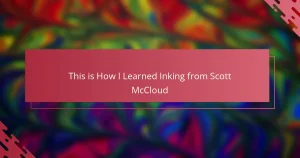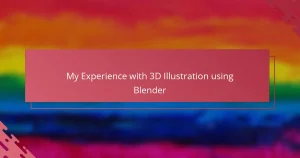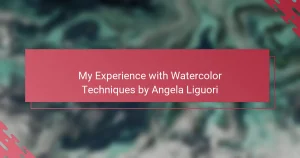Key takeaways
- Simplicity in character design, using clear shapes and bold silhouettes, enhances recognition and personality expression.
- Mastering tools like Adobe Illustrator’s Pen and Shape Builder allows for smoother, more creative design processes.
- Exaggerating key features and mixing unexpected traits can make characters more memorable and engaging.
- Curating a cohesive portfolio that reflects a consistent style and theme is vital for making a strong impression.
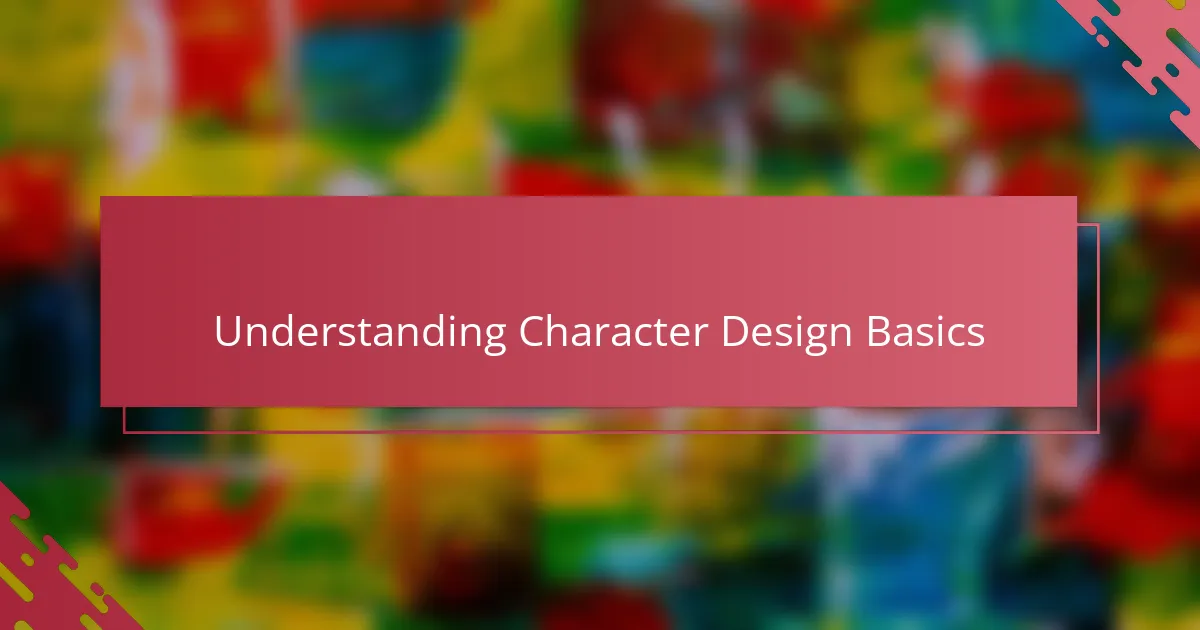
Understanding Character Design Basics
Character design, to me, is all about capturing personality in a single image. When I start a new project, I ask myself: What story does this character tell before they even say a word? This mindset helps me focus on shapes, expressions, and colors that convey emotion and background without needing explanation.
One thing I’ve learned is that simplicity often speaks louder than complexity. Early in my design journey, I spent hours detailing every tiny feature only to realize that some of the most memorable characters I admire rely on clear, bold shapes that make them instantly recognizable. It’s fascinating how limiting details can actually free your creativity.
Have you ever noticed how a character’s silhouette alone can make you guess their personality? That’s no accident—it’s a fundamental principle I remind myself of constantly. Crafting a unique, expressive silhouette ensures the character stands out and tells their tale effectively, even from a distance.
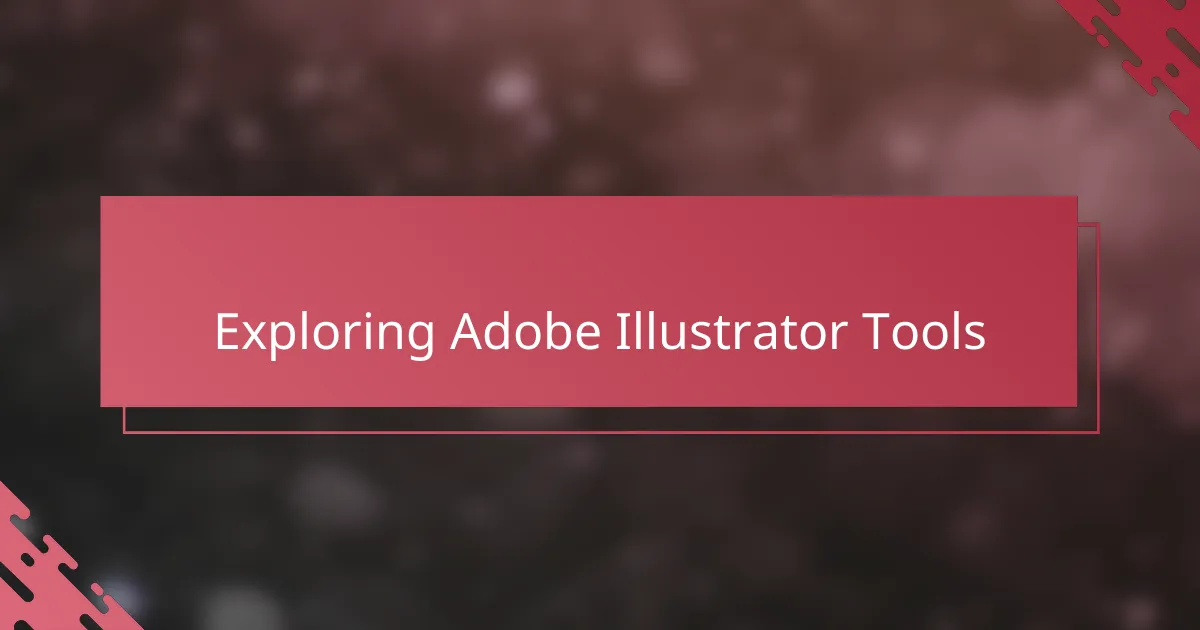
Exploring Adobe Illustrator Tools
Diving into Adobe Illustrator’s tools feels like opening a whole new world for character design. I still remember the first time I played with the Pen tool—it was tricky at first, but once I got the hang of those curves, my characters started to come alive with smooth, clean lines. Have you experienced that moment when a tool just clicks, and suddenly your vision flows effortlessly onto the canvas?
The Shape Builder tool quickly became my favorite secret weapon. I enjoy how it lets me combine and subtract simple shapes to form complex silhouettes without fuss. It’s almost like sculpting with digital clay—there’s something deeply satisfying in shaping characters piece by piece until they look just right.
Working with layers and groups in Illustrator also changed how I approach characters. Organizing parts like eyes, hair, or clothing into separate layers gives me freedom to experiment without fear of messing up other details. This control feels empowering—it’s like having a safety net while I explore bold new ideas. Have you found that structure enhances your creative flow too?
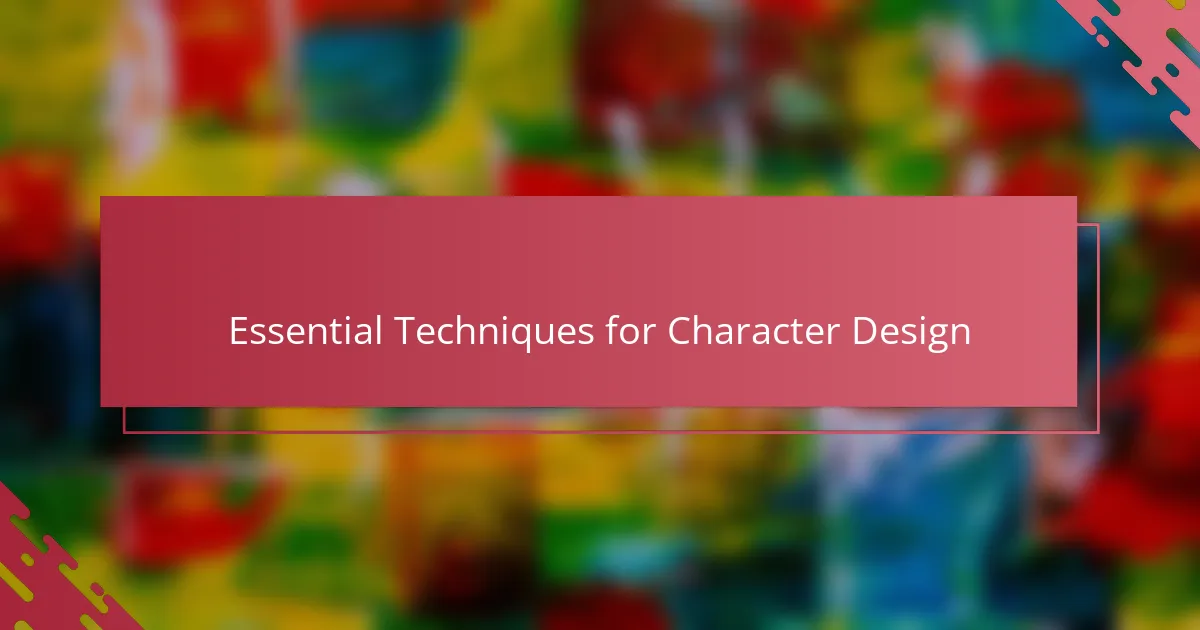
Essential Techniques for Character Design
One technique I consider essential is mastering the use of basic shapes as building blocks. When I started simplifying my characters into circles, squares, and triangles, the design process became much more intuitive. Have you ever noticed how these simple forms naturally suggest different personalities—circles feel friendly, triangles can be sharp or dynamic? Using them deliberately helps me create more expressive and balanced characters.
Another approach I rely on is refining my color choices to enhance mood and personality. Early on, I struggled with picking palettes that truly fit my character’s story, but experimenting with limited color schemes taught me a lot. For example, using warm tones can make a character seem approachable, while cooler shades might hint at mystery or aloofness. Don’t underestimate how much color influences first impressions.
Finally, I’ve found that exaggerating key features is a game-changer in character design. Sometimes a slightly oversized eye or an exaggerated posture makes the difference between a forgettable character and one that pops off the screen. It’s thrilling to see how a small tweak can bring energy and life to a design—have you tried pushing your proportions just a bit? It often leads to unexpected and exciting results.
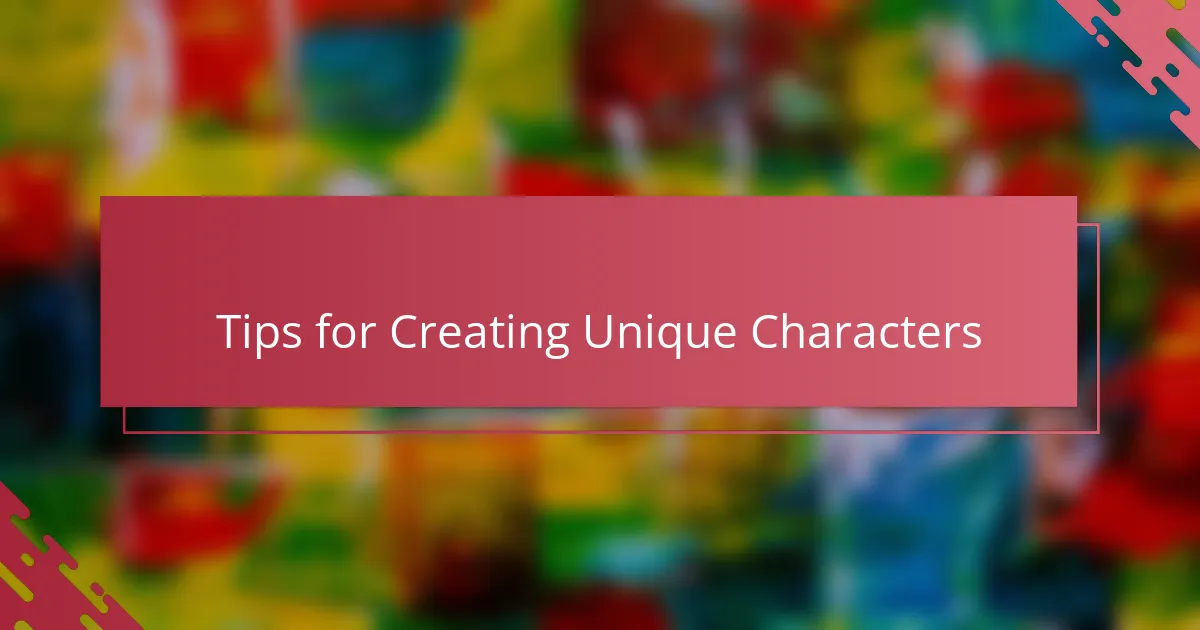
Tips for Creating Unique Characters
One tip I always come back to is embracing imperfection when sketching ideas. I used to get frustrated trying to make every line flawless right away, but allowing myself rough drafts actually sparked more creativity. Have you ever noticed how those unpolished sketches hold more personality and originality than a polished but lifeless drawing?
Another strategy I rely on is mixing unexpected traits to surprise viewers. For instance, giving a tough-looking character soft eyes or a quirky accessory injects depth and memorability. It’s like telling a secret story visually—don’t you find those little contradictions make a character feel more real and intriguing?
Lastly, I focus on developing a backstory, even if it’s just a few notes. Knowing where my character comes from guides design choices and makes the creation feel meaningful. When you build with purpose, each detail seems intentional rather than random. Have you ever felt that connection when your character’s design and story perfectly align? It’s truly satisfying.
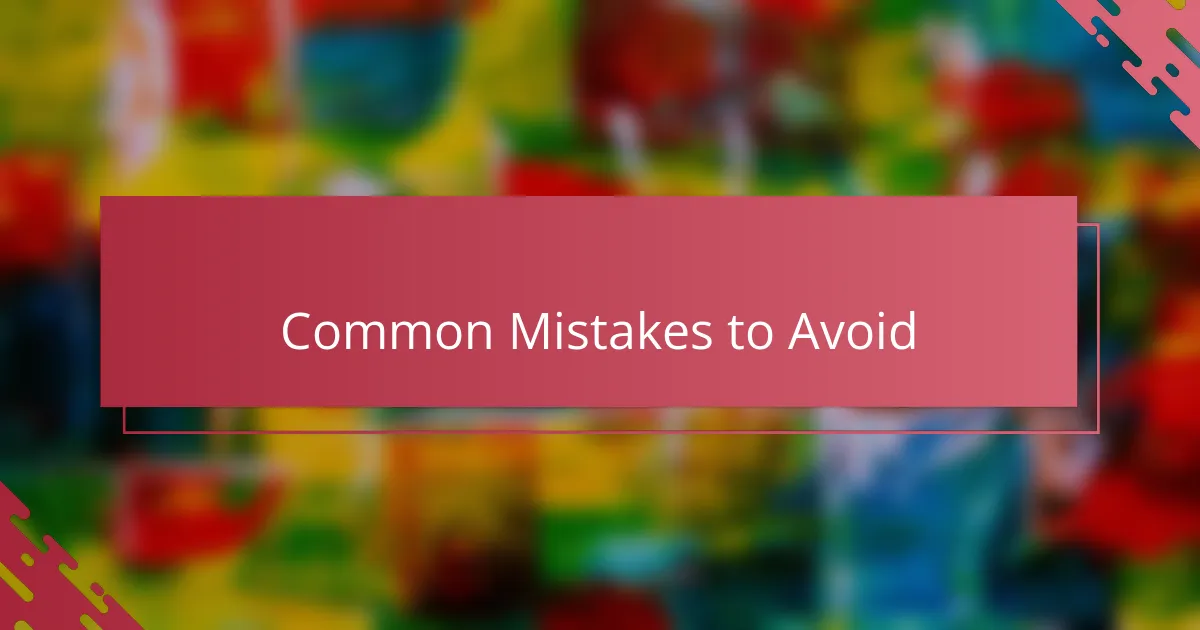
Common Mistakes to Avoid
One mistake I see beginners make is overcomplicating their characters with too many details. I remember spending hours on tiny textures only to realize that clutter distracted from the character’s core personality. Have you ever felt your design getting lost under layers of unnecessary elements? Simplifying early on can save you that frustration.
Another common pitfall is ignoring the importance of consistent line work. Early in my work, my line thickness would jump around, making the character look unpolished. Paying attention to stroke weight and smoothness really helped my characters feel cohesive and professional. Do you notice how clean lines can instantly elevate a design’s appeal?
Finally, it’s easy to forget about the character’s silhouette when focused solely on internal details. I once designed a character that looked great zoomed in but disappeared visually from a distance. How often do you check if your character remains readable at a glance? Maintaining a strong, unique silhouette is crucial to avoid this oversight.
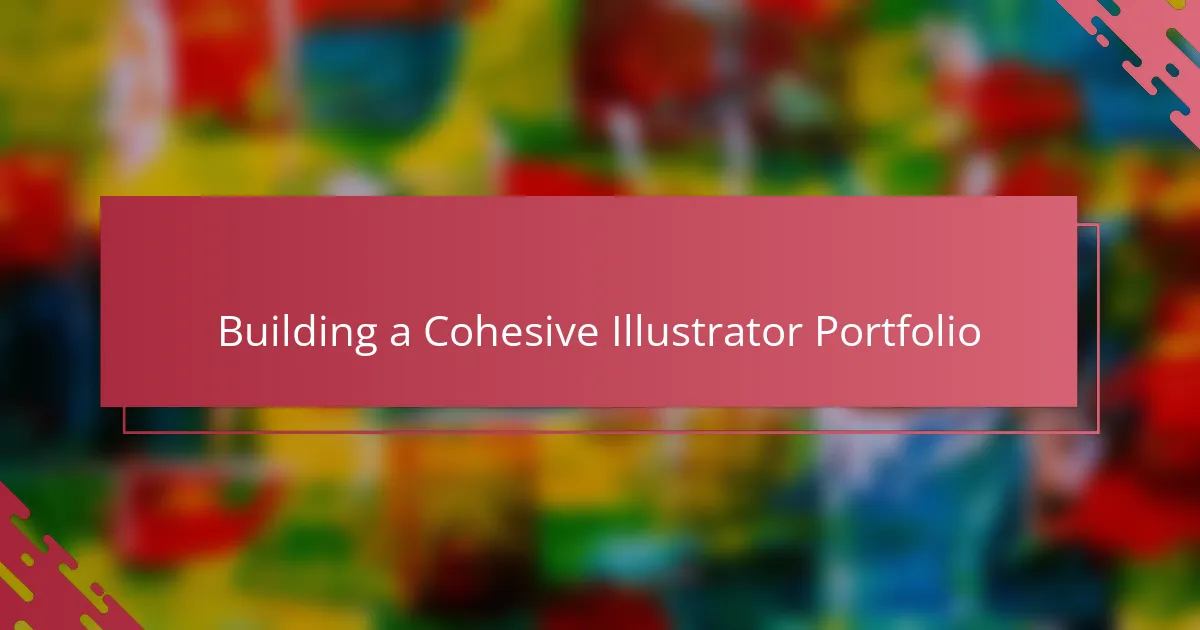
Building a Cohesive Illustrator Portfolio
Building a cohesive Illustrator portfolio isn’t just about showcasing a bunch of random pieces; to me, it’s about telling a consistent visual story. I’ve noticed that when my portfolio reflects a clear style and theme, it feels more intentional and professional. Have you ever flipped through portfolios that look scattered, with wildly different styles? It’s distracting and doesn’t leave a strong impression.
One thing I learned the hard way is the importance of curating your work thoughtfully. Early on, I included every character I ever designed, hoping quantity would impress. Instead, it made my portfolio feel cluttered and unfocused. Narrowing down to pieces that demonstrate growth and consistency was tough but ultimately rewarding—it gave my portfolio a clearer voice and purpose.
Organizing your portfolio by project or character type can also make a big difference in flow. I like grouping characters that share a similar mood or design approach because it shows range within a unified framework. How you present your work can guide the viewer’s eye and shape their understanding of your style, which, in my experience, is just as important as the art itself.
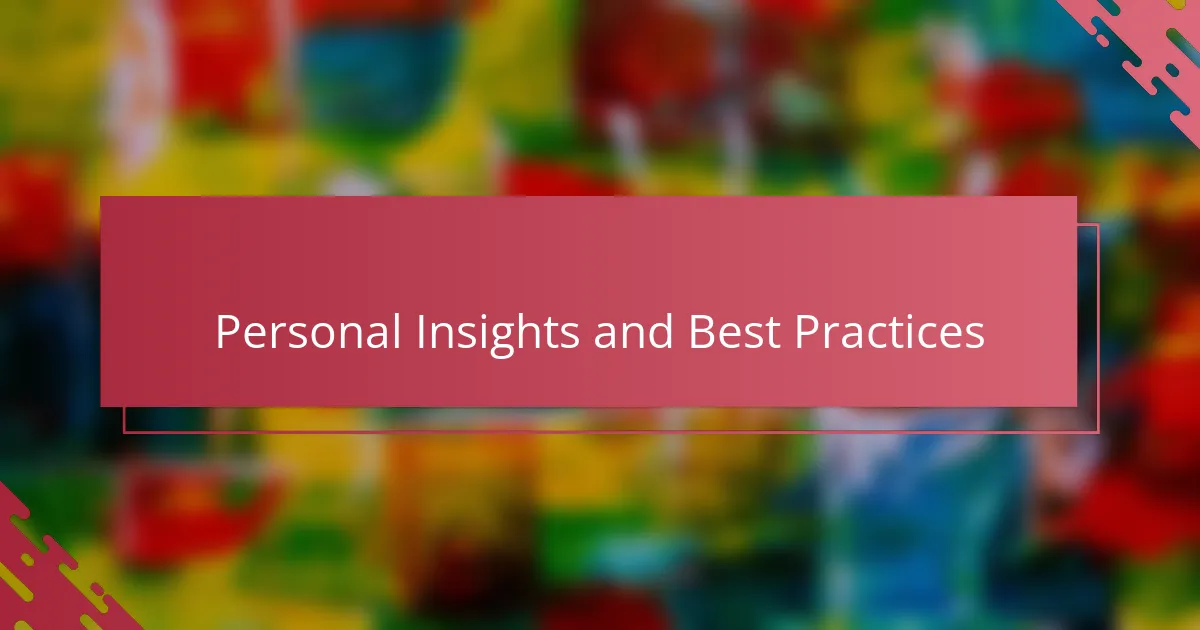
Personal Insights and Best Practices
I’ve found that patience plays a huge role in character design with Illustrator. Sometimes I rush, eager to see the final result, but stepping back and letting ideas simmer leads to far richer designs. Have you ever noticed how a bit of waiting can spark unexpected creativity?
Another best practice I swear by is regularly revisiting and tweaking my work. Even after I think a character is “done,” I often go back to adjust proportions or colors, finding small improvements that breathe new life into the design. Does going back help you see details you missed the first time around?
Lastly, trusting your instincts is essential. There have been moments when I doubted a bold design choice only to realize it made the character truly unique. How often do you challenge yourself to push past comfort zones in your designs? For me, that’s where real magic happens.
